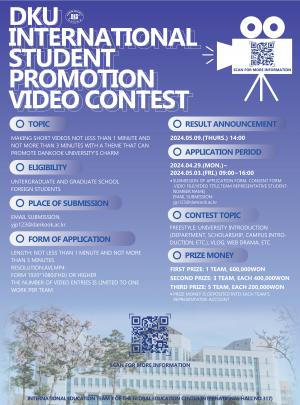Social Networking Services, simply known as SNS, have changed people’s lives more than we ever imagined. Through SNS, people look for news, share their current status, obtain information, watch videos and even shop for goods. In other words, people’s lives are intrinsically linked to their preferred SNS. With SNS playing such a tremendous role in our daily existence, marketers are beginning to seize this opportunity to utilize them as new platforms for marketing their products.
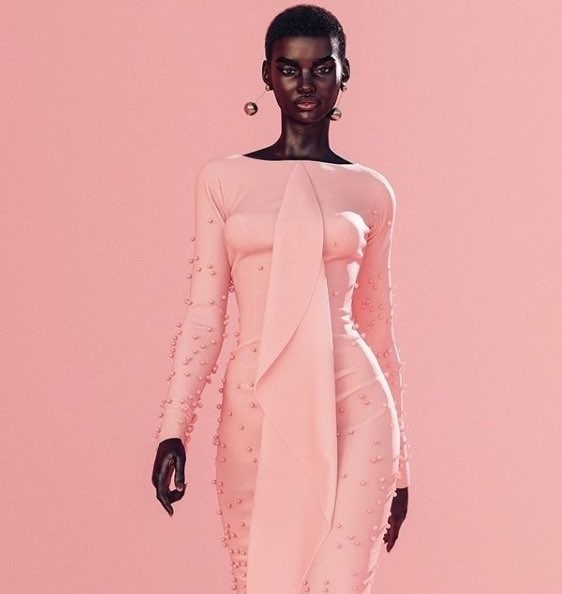 |
| ▲ Shudu, a virtual model created by Cameron James Wilson, as seen on Instagram. |
One of these new social media based marketing concepts takes the form of virtual celebrities. Today, virtual celebrities are not limited to animated characters or artists. Digital models are being generated using 3D image processors. Digital models have been brought to the attention of marketers as an effective promotional tool as they can easily be made to suit the products.
One example of a computer generated model is Shudu, a dark-skinned digitally created female whose photos went viral on the photo sharing social media platform Instagram, due to her perfect skin complexion and astonishing beauty. At first people were unaware that she was a digital creation by self-learned 3D artist and photographer, Cameron-James Wilson. Also, Lil Miquela who started posting on Instagram in 2016, is often seen wearing clothes by the luxury brands Prada, Chanel and Supreme, who caught the eyes of people on Instagram. She was listed as one of the ‘25 most influential people on Internet’ in 2018 along with BTS, Rihanna and Donald Trump. She has since accumulated 1.3 million followers. Miquela looks like a Brazilian-American with freckles, big lips and dark hair and claimed to be from Downey, California. At first, her true identity was questioned until it was finally revealed that she was a digital art project created by Trevor McFedries and Sara Decou.
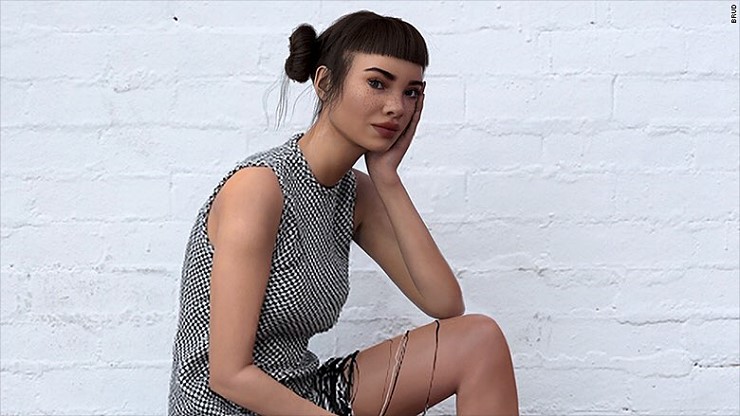 |
| ▲ The first digital model on Instagram, Lil Miquela. (source: CNN) |
These digital models have gained the interest of many marketers as they are social media influencers and easily attract a great pool of followers. Digital models seen wearing cosmetics products or apparel from a company on social media have a bigger impact than conventional advertisements. Using digital models also costs less than hiring supermodels.
Another big change due to the development of social media is the concept of a ‘pop-up store’, also known as a temporary retail outlet, flash retailing or pop-up shop. These short-term retailers last for about a month or two. When American discount retailer Target couldn’t find space for new store, they opened a short term temporary online shop which was a hit with many people. Likewise, several other companies benchmark this process creating pop-up pages on webpages, so people begin calling them pop-up stores.
There are several benefits to opening a pop-up store. As pop-up stores are opened for a short term, their scarcity increases their value. As a result, they often attract more shoppers than they are used to, which is good for marketing things that producers want to go viral in short time such as newly released products like Jeju beer.
Moreover, it creates a buzz very easily. Nowadays, people in their 20s-30s are digital natives which means they grew up in the digital age and they are very used to using digital tools like social media to get most of their information. Pop-up stores are one of the things that people experience when they log into their social media. Furthermore, pop-up stores attracts young people who are sensitive to trends labelled as ‘hot ticket items’.
One example of a hot ticket in Korea is the Extremely Rabbit pop-up store (also known as Over Action Rabbit). Over Action Rabbit is a character created by Japanese painter, Nemotaro. The first pop-up store opened in 2017 at the Sinchon Hyundai Department Store. Many people came to look around and buy Extremely Rabbit products and the line of people started from the store in the basement and ran all the way up to the 1st floor. After this event, Extremely Rabbit collaborated with many other brands increasing its publicity and many related products came out afterwards. Now, it has an online store and continues to enjoy high brand awareness.
 |
| ▲ The Over Action Rabbit Mascot in the pop-up store. (source: Kukmin Ilbo) |
For any brand or new store, a pop-up location is an effective marketing tool because it costs less money than opening up a long term physical store. Pop-up stores usually open in buildings, containers or rent sites temporarily, and a lot of money is spent on the site design. The goal is to depict images that the brand wants to sell to consumers that they couldn’t otherwise get across in an advertisement or a normal shop. So, seasonal items like Halloween costumes and Christmas gifts are considered suitable pop-up store products.
Moreover, pop up shops are great for promoting businesses. The product makers can meet their customers directly in pop-up stores and get feedback from their clients more easily. Furthermore, unlike normal stores, pop-up stores have the power of command to bring uproarious responses online. For instance, they can create an image for themselves by using hashtags or linking themselves to related search words.
Pop-up stores are also effective marketing tools for brands with less money seeking a more immediate reaction. Customers can easily communicate with these brands and use their social media to promote items while interacting with their friends. Therefore, many make-up brands and distribution industries are greatly interested in pop-up stores.
Pop-up stores are not the only hot trend in marketing these days. Branded content is also on the rise. It is a content that does not involve typical advertising, but rather exposes consumers to its products in indirect ways. Branded content is found in articles, videos, TV shows and even live elements that are relevant to consumers. Unlike general advertisements we see on TV or elsewhere, this content is subtly displayed, so it slowly fuses into our daily lives without people noticing. General advertisements can be skipped by consumers at any time, as most people are irritated if they are repeatedly interrupted by them. In comparison, branded content is barely visible and feels more “natural” to the reader or viewer.
Branded content is produced by a publisher or creator in collaboration with a business partner, and the brand is featured in the content created. This can be done in different ways.
A good example of branded content being used effectively is when the on-demand transportation service Lyft used a popular TV show to promote their services. Viewers felt more connected to the brand as it was featured in popular TV shows about teenagers. The story follows 6 teenagers who find out their parents are super-villains in the popular Marvel TV series – Runaways. Since the teenagers have to get around town in Los Angeles, Lyft serves as the main transportation method in the show, hence promoting the brand.
Since products and services are only indirectly mentioned in the content, branded content is also popular on social media networks featuring bloggers or Youtubers. Social media platforms have enabled creators to make a living by creating content online and YouTube stars have become household names, some of them are even more popular than TV or movie celebrities.
Many of these online influencers have been able to receive sponsorship from suitable brands. Since these creators have a very specific group of viewers, brands can target different consumers by approaching different online influencers.
For instance, beauty Youtuber Risabae, who has more than a million subscribers, is sponsored by various makeup brands. Some brands have even collaborated with her and created “Risabae products”, featuring her name and face on the packaging. Risabae’s viewers are mostly women in their 20-30s who use beauty products daily. After watching any of Risabae’s videos featuring those products, followers purchase them in order to achieve the same look she created in the videos.
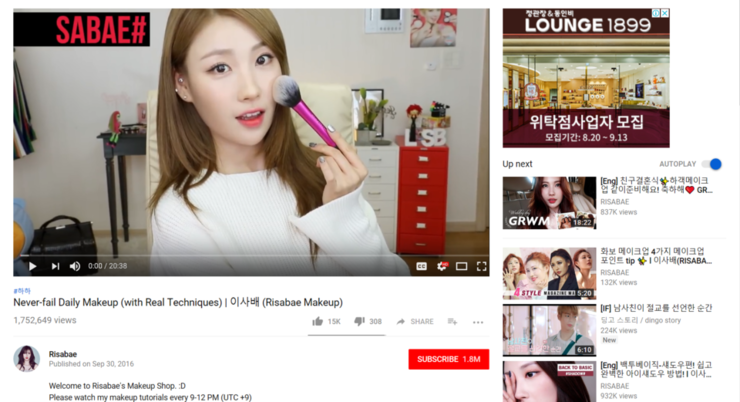 |
| ▲ Beauty Youtuber "Risabae" featuring make up brush brand "Real Techniques" in a video. |
Vloggers on YouTube are also approached with lifestyle sponsorships, including restaurants, phone apps and sometimes even airlines. American YouTuber “Casey Neistat” is especially famous for his first-class airplane seat reviews for different airlines that came about due to airline sponsorship, and these vlogs have gained at least 15 million views. As a result, branded content is fast becoming a win-win relationship between sponsors and creators.
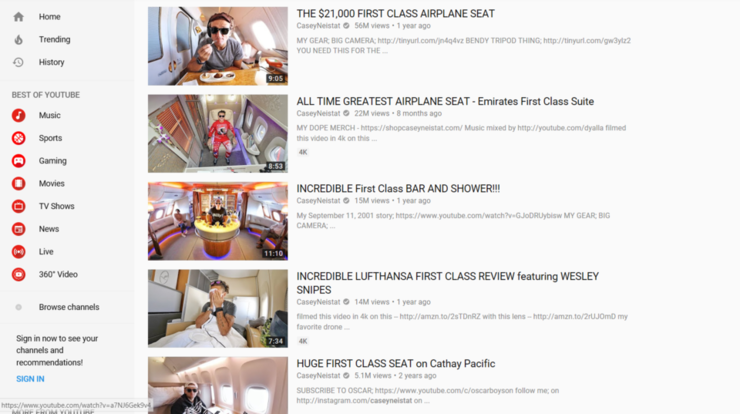 |
| ▲ Casey Neistat featuring first class seats of different airlines on his youtube channel. |
The difference that sets social media networks apart from traditional media is its availability and instant communication. Consumers and users feel more involved because it is an interactive platform originating from SNS. Marketing through SNS is becoming more applicable and acceptable by people nowadays as they slowly creep into our social media feeds and eventually our lives.
Edward Ng, 정유진, Mak Hao Yang dankookherald@gmail.com

![[Campus Magnifier] Let's Surf the Library!](/news/photo/202404/12496_1765_4143.jpg) [Campus Magnifier] Let's Surf the Library!
[Campus Magnifier] Let's Surf the Library!
![[Campus Magnifier] Let's Surf the Library!](/news/thumbnail/202404/12496_1765_4143_v150.jpg)
